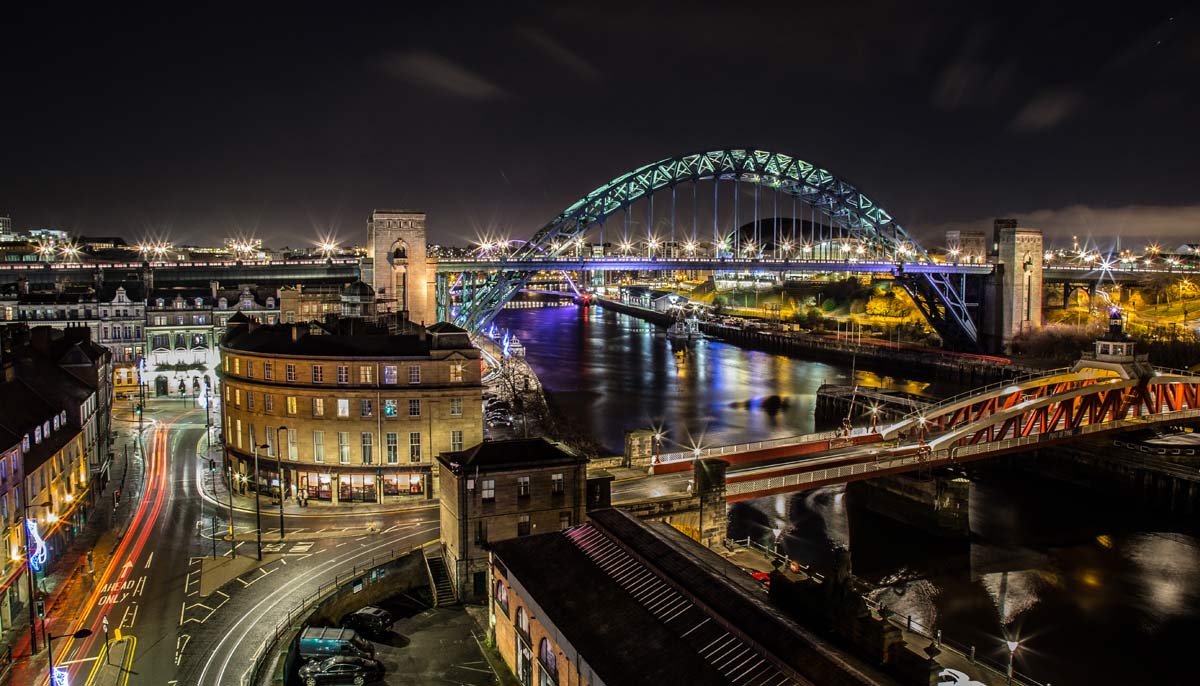Cities in the Cloud
Cities in the cloud
Published on: 20 May 2019
How the UK’s largest urban experiment is starting to shed light on how our cities should be managed and developed in the future.
Thousands of sensors deployed across Newcastle-Gateshead, Sheffield and Bristol are providing us with a unique understanding of how our cities work and the impact climate change might have on them.
Collecting well over a billion records so far, the three Urban Observatories are collecting data about 60 different urban indicators, everything from energy use, rainfall and flooding to air pollution, traffic flow and even social media activity.
The aim is to understand how our cities react to change and what the impact of policy decisions and new infrastructure or interventions might be.
The Urban Observatories are a partnership between the universities of Newcastle, Sheffield and Bristol and the local councils.
Now the £12m project, funded through the Engineering and Physical Sciences Research Council, is being extended to three more major cities led by the universities of Manchester, Birmingham and Cranfield.

World's largest set of real-time data
Newcastle University’s Phil James, who leads the EPSRC Urban Observatories partnership, explains:
“All cities face similar challenges of air pollution, changing energy demands, traffic volumes and where to spend scant resource, but how each city tackles these challenges will reflect local conditions and priorities.
“The six observatories will enable us to test a range of interventions and explore different solutions to the same problems.”
Newcastle University’s Urban Observatory is based on the city’s Helix site, an exemplar of sustainable urban development and home to the University’s School of Computing and the National Innovation Centre for Data.
Over 3600 sensors are deployed across Newcastle and Gateshead alone, adding 5000 new observations every minute. It is the largest deployment of urban sensing in the UK and the largest collection of open, environmental, real-time data in Europe.
Measuring over 60 different urban indicators from air pollution to the health of urban beehives, the team have also involved local communities through the SenseMyStreet project which enables people to carry out their own monitoring of issues such as air pollution, traffic and noise around homes and schools.
"By 2050, around 70 per cent of the world’s population will live in cities,” says James.
“We know there is an urgent need to reduce air pollution in our cities by reducing congestion and cutting carbon emissions. But if we look at this in isolation then we’re storing up a whole host of other problems further down the line.
“A study from a team in Edinburgh last week, for example, suggested the knock-on effect of reducing air pollution would be a reduction in cloud cover and therefore an increased risk of heatwaves in our cities.
“At the same time, we heard from the Environment Agency about how we need to adapt our infrastructure and stop building on flood plains to become more resilient to climate change and future flooding.
“But another study by colleagues right here in Newcastle shows that if we are to move development away from the river banks and coastlines, while still protecting our green spaces and reducing sprawl, it really only leaves two options; either we shrink our homes or we develop in higher heat risk areas such as inner cities – once again increasing the number of people exposed to extreme heatwaves.
“Everything in a city is connected so we can’t look at problems in isolation. It’s no good solving one problem only to create three more.
“What we are trying to do through the Urban Observatories is to understand exactly how our cities interact. Once we have that baseline then we can see not only the positive impact when we implement a change, but also any unintended consequences and adapt our approach – like following the ripples on a pond when we throw stones.”
Mapping our cities' social patterns
Professor William Powrie, Convenor for the UK Collaboratorium for Research on Infrastructure and Cities (UKCRIC), adds:
"The Urban Observatories represent a vital strand of the UKCRIC research to underpin the renewal, sustainment and improvement of infrastructure and cities in the UK and elsewhere.
“Our facilities and data / simulation activities might develop potential solutions and trial them in the virtual world, but it is in the Observatories that we will see how they work in reality.
“It is really exciting now to see results coming through that demonstrate in real terms how we can successfully address the key problems facing societies today."
Mapping our cities’ social patterns
Cities are big complex beasts with overlapping layers of management, jurisdiction, governance and social need.
Understanding the social patterns of a city, says Dr James, is one of the biggest challenges for policy makers and future planners.
“Only by collecting lots and lots of data can you start to see the subtle changes,” he explains. “Cities operate on their own social patterns driven by the weather, school holidays and seasonal changes but everything is connected and so data that informs any decisions that we make needs to be connected too.”
Data is published in real-time and is open for all to view, analyse and use (http://newcastle.urbanobservatory.ac.uk)



